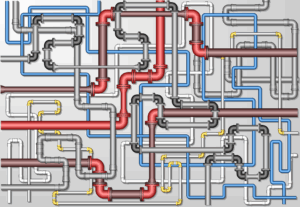A Human Solution
Humanized design, as noted in a blog, “The Science Behind Humanized Design: Why It Matters and How to Do It,” by Innovolo Group, is “a process of designing products and services tailored to human needs and preferences.” It emphasizes creating user-friendly interfaces, a consistent user experience across devices, and delivering valuable content with attention to detail. The science behind humanized design is based on understanding human psychology and behavior. Ultimately, the benefits of humanized design can lead to increased user satisfaction, more user loyalty and increased sales.
Innovolo highlights some of the key principles of humanized design:
- Emotional design: Humans are emotional creatures, and their emotions play a major role in their decision-making process. Humanized design considers this by creating products and services that evoke positive emotions, such as happiness, excitement, or surprise.
- User experience: The user experience (UX) is a user’s overall experience with a product or service. Humanized design focuses on creating a positive UX by making products and services easy to use, intuitive, and enjoyable.
- Design thinking: Design thinking is a problem-solving process that uses empathy, creativity, and experimentation to come up with innovative solutions. Humanized design is based on the principles of design thinking, and designers use this process to create products and services that are more likely to meet the needs of humans.
Paving the Way to Innovation
In July, All Things Innovation took a look at, “Unleashing Innovation with UX Design.” Taking a design-centric approach can enhance the overall user experience and benefit innovation growth efforts. User experience (UX) is specific to how people use and perceive your products. This design process is said to provide meaningful and relevant experiences to users, and involves aspects of branding, design, usability and function. So how can these key components of user experience work together, create synergies and benefit the marketer in improving the overall experience?
In “Diving into Humanity-Centric Innovation,” we explored the continued emergence and evolving development of artificial intelligence. There rises a question of how humans and AI can work together more efficiently to better our lives in the future. For the innovation community, AI is a mostly positive and useful tool to crunch the data, analyze results and leverage its capabilities to move forward the company’s strategic and product development efforts. But just how can we humanize the data to make it easier for the user experience?
User-Friendly Central
Humanized design processes are centered around making products, services, and experiences more user-friendly, intuitive, and empathetic. These processes focus on understanding and addressing the needs, preferences, and emotions of users. By incorporating humanized design principles, organizations can significantly enhance the user experience. Not without a sense of irony, we asked ChatGPT to outline ways that the humanized design process can support UX:
- User-Centered Research: Conduct extensive user research, including surveys, interviews, and usability testing, to gain deep insights into user needs, pain points, and behaviors. Use personas and empathy maps to create a clear picture of users and their motivations.
- Empathy and Understanding: Develop a deep sense of empathy for users by immersing yourself in their context, challenges, and emotions. Consider the emotional aspects of the user experience, not just functional requirements.
- User Feedback Integration: Continuously gather and incorporate user feedback throughout the design and development process.
- Accessibility and Inclusivity: Ensure that designs are accessible to users with disabilities by following accessibility guidelines. Consider the needs of diverse user groups, including those with varying abilities, languages, and cultural backgrounds.
- Intuitive Interfaces: Create intuitive and user-friendly interfaces that require minimal effort for users to understand and navigate.
- Visual and Information Design: Pay attention to visual hierarchy, typography, and layout to make content easy to scan and understand. Use storytelling and visual cues to guide users through complex processes or information.
- Usability Testing: Conduct usability testing sessions to identify usability issues, validate design choices, and ensure that the product meets user expectations.
- Reducing Cognitive Load: Simplify complex tasks and processes to reduce cognitive load on users. Provide clear instructions, visual aids, and contextual help when necessary.
- Emotional Design: Design interfaces and interactions that evoke positive emotions and create memorable experiences.
- Personalization: Offer personalized experiences based on user preferences and behaviors.
- Responsive and Adaptive Design: Ensure that designs are responsive and adaptive to various screen sizes and devices, providing a consistent experience across platforms.
- Ethical Considerations: Address ethical and privacy concerns, ensuring that user data is handled responsibly and transparently.
- A/B Testing and Iteration: Continuously test variations of designs and features to determine which options resonate best with users.
- User Education and Onboarding: Provide clear onboarding processes and tutorials to help users get started easily.
- Support and Feedback Channels: Offer accessible channels for users to seek help, provide feedback, and report issues.
Creating Engagement
Incorporating humanized design processes into the UX design lifecycle fosters a deeper connection between users and products or services. It results in more satisfying and enjoyable experiences, increased user loyalty, and a competitive advantage in the market. Ultimately, humanized design processes help create products and services that truly meet the needs and aspirations of users. Making it easy and enjoyable for your users may sound intuitive but is the result of a deeper focus on the user experience. Ultimately, in a world where brand trust and authenticity are key, humanizing your product is critical to creating an emotional connection and engagement with your users.
Video courtesy of Interaction Design Foundation
Contributor
-

Matthew Kramer is the Digital Editor for All Things Insights & All Things Innovation. He has over 20 years of experience working in publishing and media companies, on a variety of business-to-business publications, websites and trade shows.
View all posts
















































